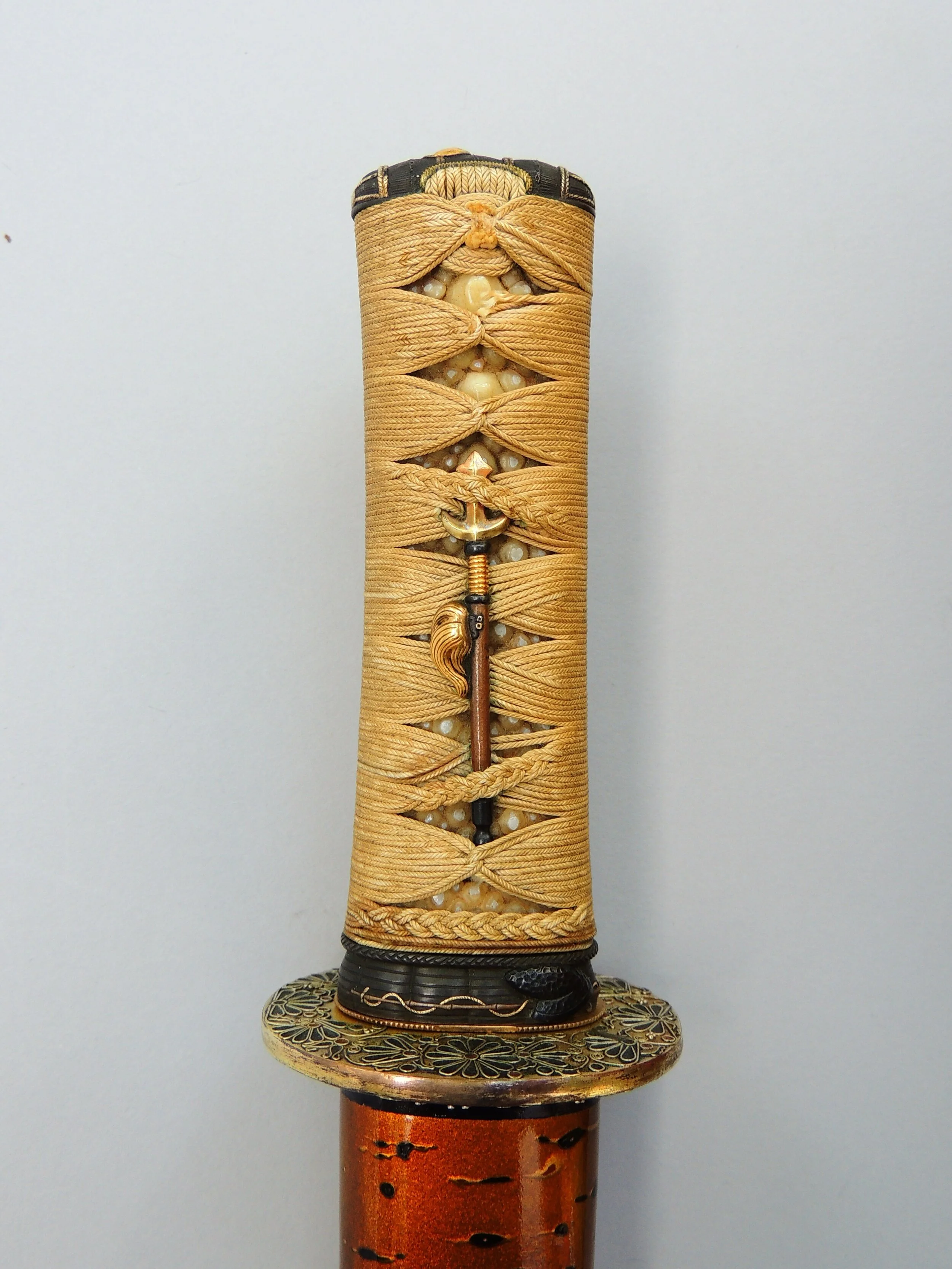Anonymous
Edo period 18th/19th century
1750-1850
Tanto
A beautiful tanto with a fully bound tsuka, plaited highlights, gold and shakudo menuki retained by plaits, one in the form of a jumonji yari spearhead, the other a crutch and bag of scrolls. Shakudo and gold fuchi in the form of a basket with details of a hat and bamboo pole, and kashira in the form of a rice basket with a gold rat sitting on top. A gilt oval tsuba decorated with foliage and flowerheads of chrysanthemums in cloisonné enamels, contained in a cherry bark lacquered saya applied with a snail in mixed metals and a kojiri in the form of a cloth and fan motif with gold kakihan mark.
The fittings are by the maker Masayuki, founder of the Hamano family of Edo. Masayuki (1730), a pupil of the great Nara Toshihisa. Masayuki is always known as Shozui, the alternative pronunciation of the ideographs forming his name. His members created some of the finest objects of metal-work, primarily in fittings for the sword. He worked chiefly in shakudo but often in iron, not making any departure from the Nara style.
The blade itself has no mei (signature) but on the blade itself is a Sanskrit character in the Siddham script. The word Siddhaṃ means "accomplished" or "perfected" in Sanskrit. The character reads Fudo Myoo Acala (immovable). Acala is a dharmapala (wrathful god in Buddhism) and is classed among the wisdom kings and is preeminent among the Five Wisdom Kings of the Womb Realm.
He is known in China through esoteric Tangmi traditions as Budong Mingwang ("The Immovable Wisdom King"). His name in Japan is Fudo Myoo. Acala is especially important in Japanese Buddhism, where he is venerated in the Shingon, Tendai, Zen, and Nichiren sects, as well as in Shugendo.
Unsigned
410mm x 55mm
Kogatana
Edo period 18th/19th century
1753-1805
A bronze and gold kozuka decorated in peonies and butterflies houses a kogatana signed Ozaki Gengouemon Suketaka. Suketaka was born in 1753, he studied in Osaka under Kuroda Takanobu where he received an honorary title “nagato no Kami” in 1789. He was well known for signing his work in a cursive script. Cursive script is more like faster handwriting but a lot more difficult to read for unfamiliar eyes.
Signed Ozaki Gengo’emon Suketaka
217mm x 14mm

